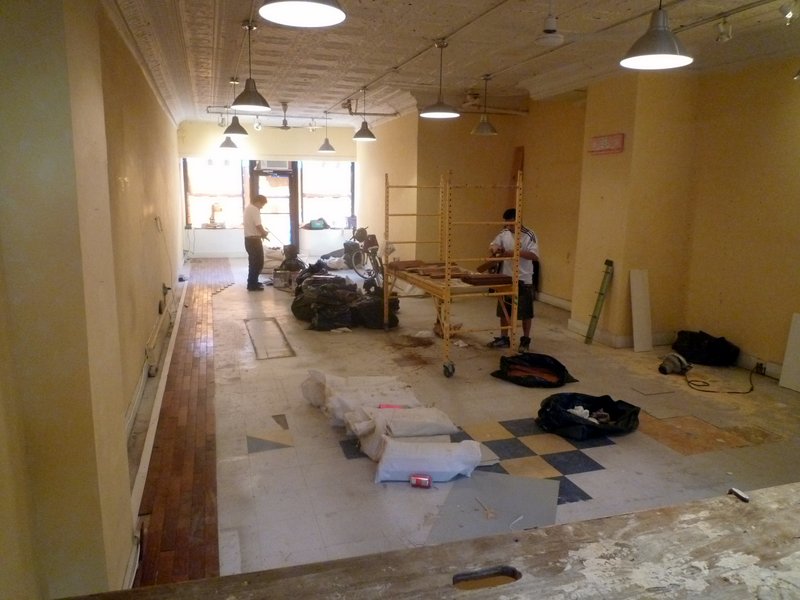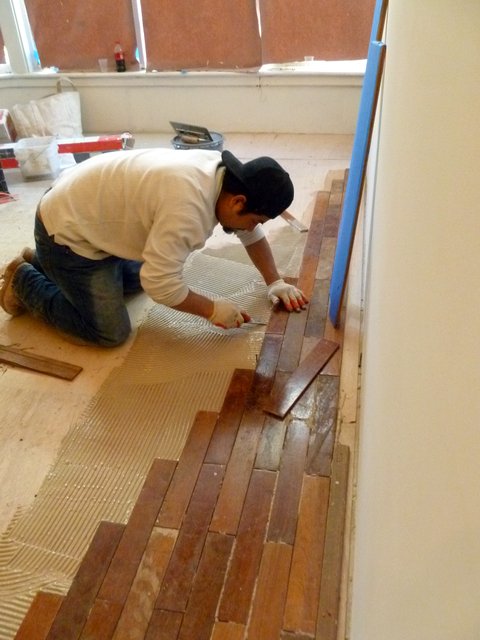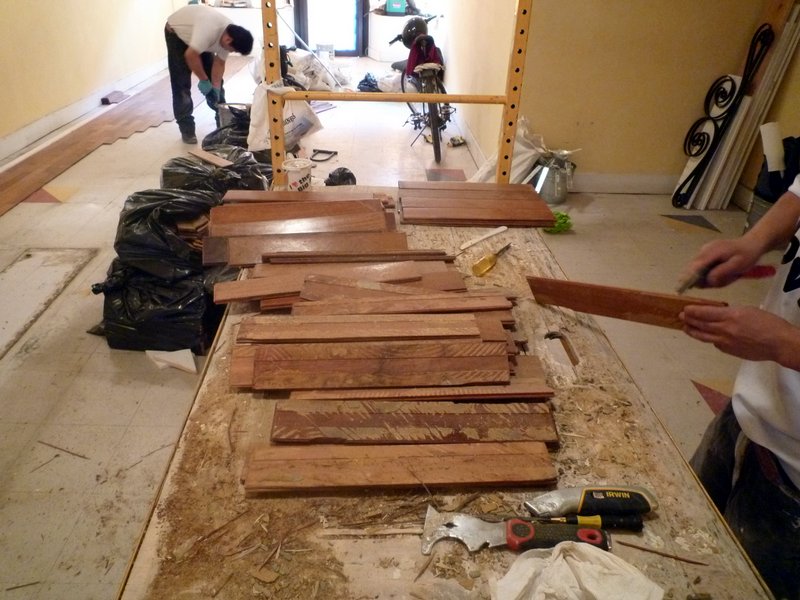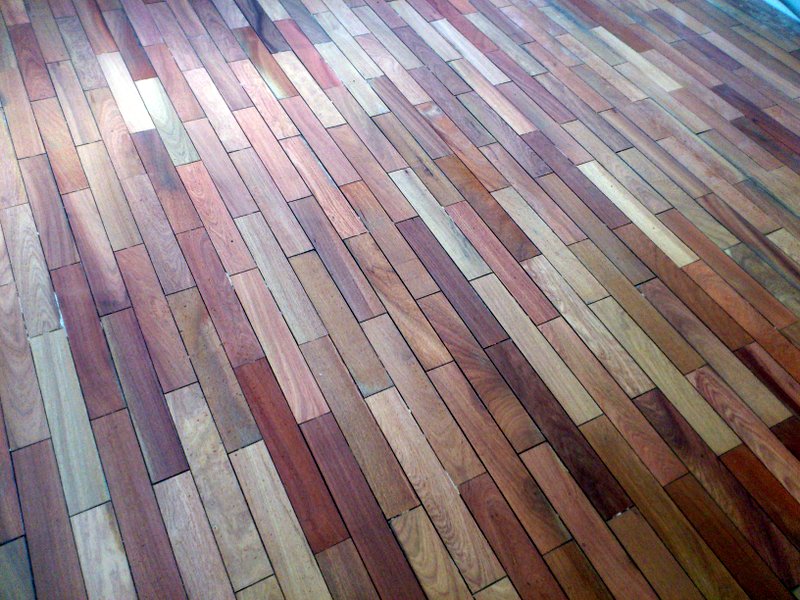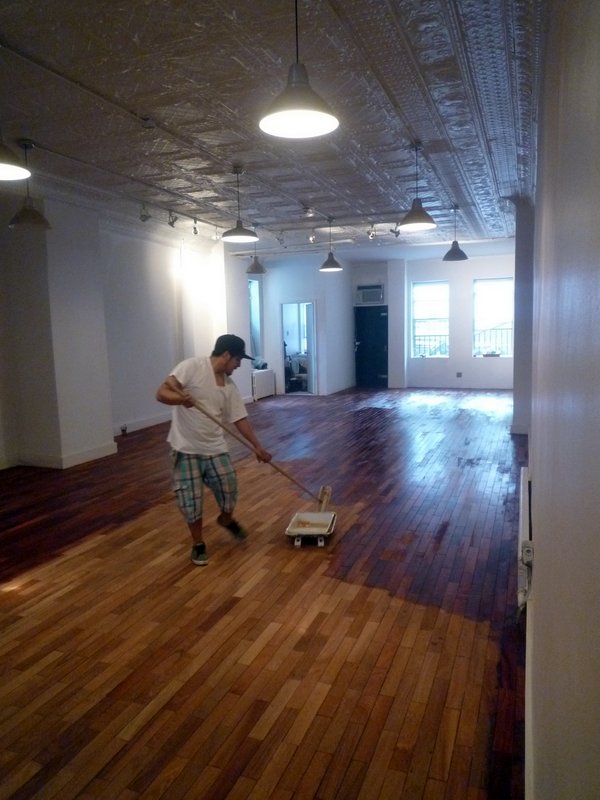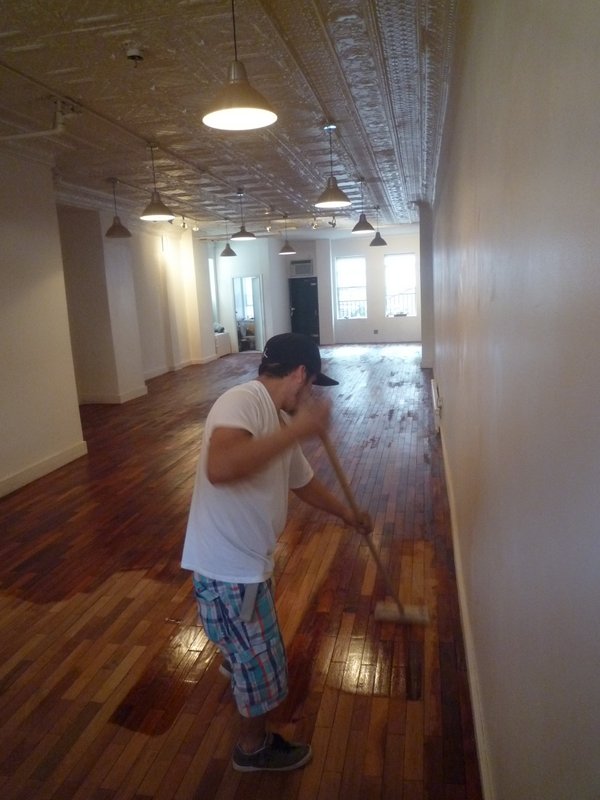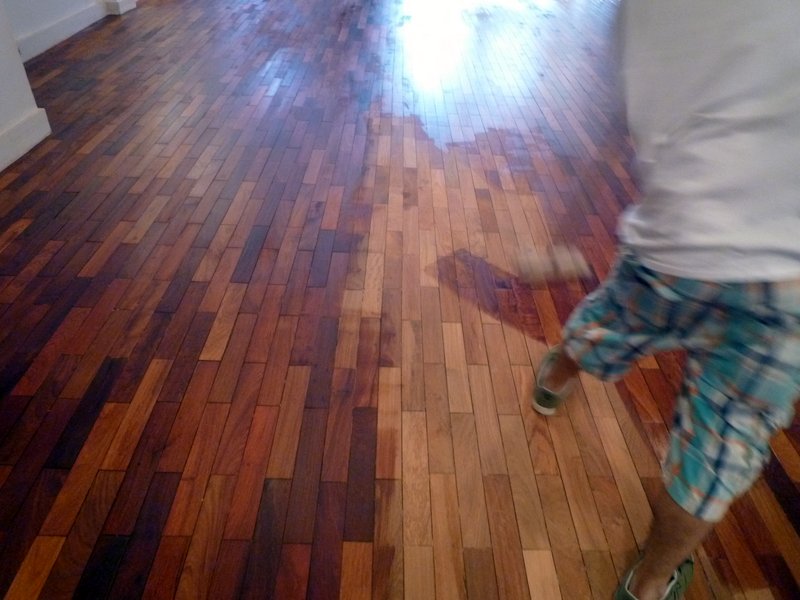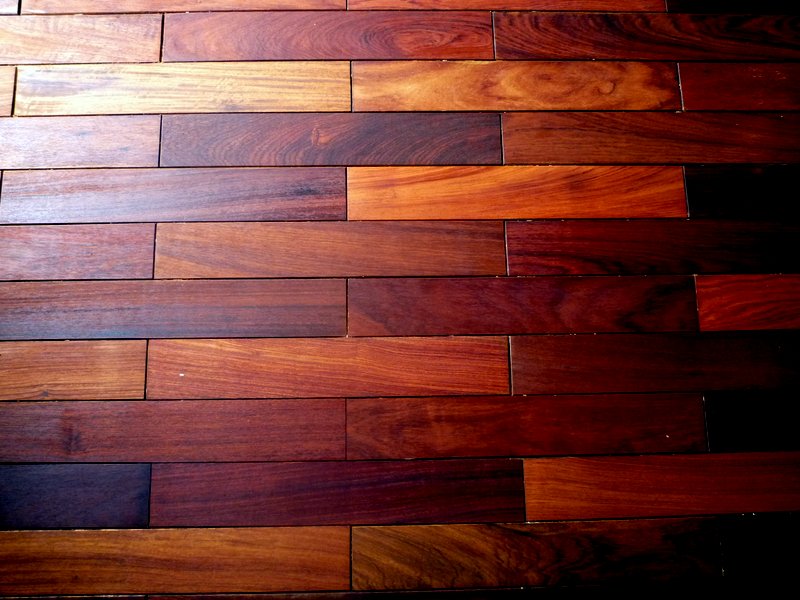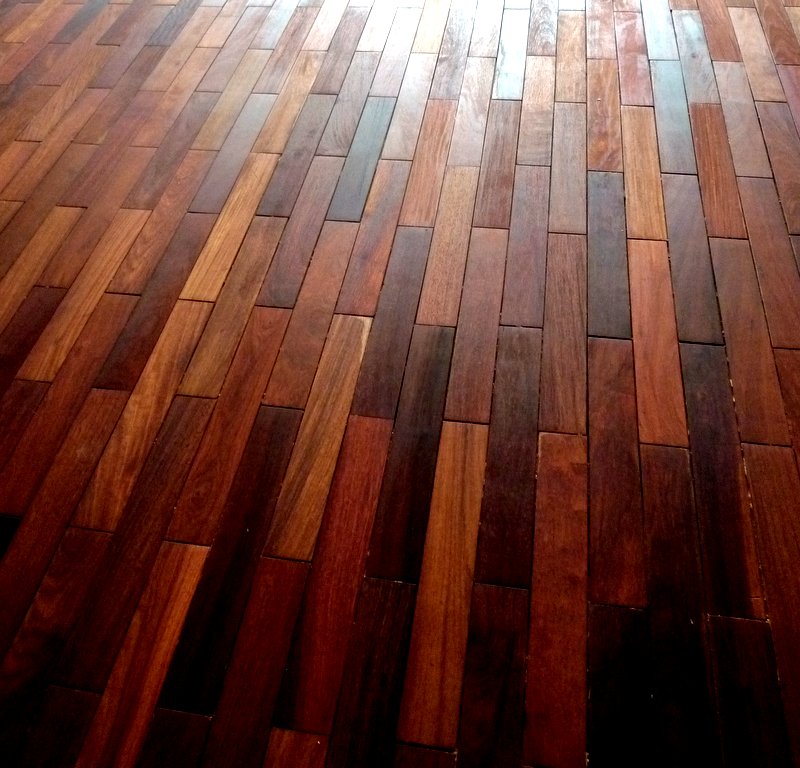For the past several jobs we have used salvaged mahogany flooring. We salvaged 15,000 square feet of it a while back. It is very pretty stuff. Here we are applying the tung oil to it.
We are applying two types of oil, simply because that is what we have left over from the previous jobs. The first coat is a mix of citrus solvent and tung oil. The second coat is a premixed natural oil from Land Arc.
Mahogany is a very hard wood and absorbs very little. It is amazing how important it is to understand the wood you are applying oil to. If you put too much it creates a sticky film, if you put too little it looks dry and dusty.
We’ve really become natural oil flooring experts when it comes to finishing salvaged wood. We learned through our mistakes. Pine, maple, oak, fir, and mahogany all have different absorption rates. Their age and condition also make a difference. If they are old and stored in the sun then they absorb more than new wood salvaged from a lower floor brownstone.
It is an art. You’ll notice the applicator in the video above is using a fluid sweeping motion combined with small jerky motions. The fluid motions spread the thin layer of oil over the wood in a uniform way, the jerky motions push it into the wood pores.
Because it is mahogany we don’t use hardly any oil. If it were old pine we would literally splash it on and almost let it sit on the wood in puddles. Then after half an hour we’d soak up the excess. We’d do this to the pine up to four times over a week.
But with the mahogany we put two light coats one day after the other and that is all it needs.
Through our experiments with salvaged wood floors we are seeing that as New York green contractor we are developing a knowledge of the local woods. Compared to several years ago we have a deeper sense of the kinds of salvaged wood in NY, what neighborhoods or types of buildings have what species of wood, what different woods look like from different decades in the 20th century…
It is a little like being an investigative historian.
